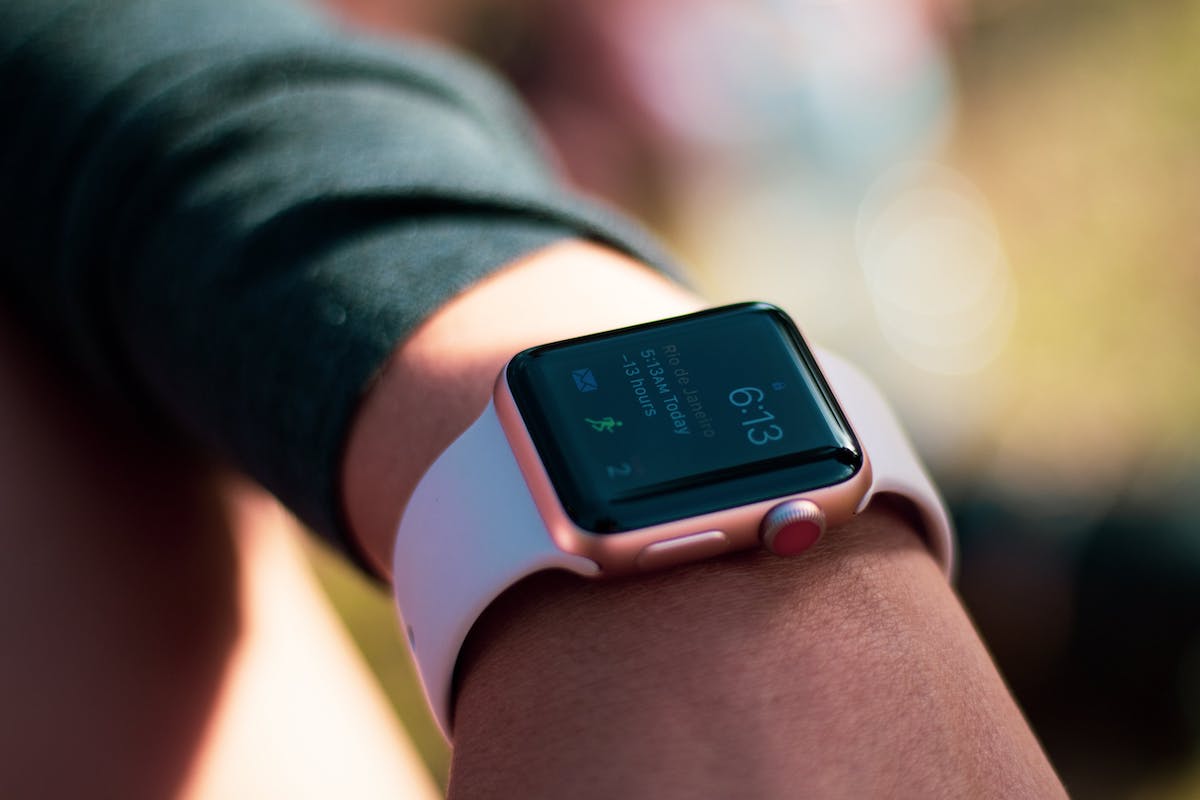Sometimes, inspiration strikes in the middle of the night. Spending time feeding his infant twins in the wee hours of the morning allowed Mario Aguilar, a health tech correspondent for STAT news, to think freely and connect the dots toward a trend in Apple and other companies developing mobile applications for the Apple Watch for people with Parkinson’s disease.

He spent several months working on his special report, “For Parkinson’s disease, advances spurred by Apple Watch offer a glimmer of hope,” which was published in October 2023. Aguilar interviewed some 20 to 30 sources — including current and former Apple employees, neurologists, entrepreneurs developing apps and people with the disease — to write the piece, which offers an interesting glimpse into how these apps could impact life for people with Parkinson’s.
In this How I Did It, Aguilar spoke with AHCJ about his process and offered advice to journalists writing about health technology.
Responses have been lightly edited for clarity and brevity.
What sparked your interest in this story?
Before I was a health technology reporter, I was a tech reporter and editor for over 10 years. I’ve covered Apple and paid attention to Apple my entire career. Shortly after I started at STAT in 2021, Apple published a paper in Science Translational Medicine about the ability to use the Apple Watch to track the symptoms of Parkinson’s disease. I knew from my previous reporting that they had sort of dabbled in Parkinson’s, so I wrote that story, and then a year later, a company featured in the story announced that they were using that research to seek FDA clearance for a technology that could track Parkinson’s disease. I started putting together the dots in my head. It wasn’t actually until a year later when I had just gotten back from paternity leave [that I worked on the story]. You spend a lot of time sitting in the dark with babies, feeding babies, and the idea materialized in my head to paint a picture of the evolution of Apple’s health efforts through the lens of this Parkinson’s research and new products, and how they might actually reach people.
You did some pretty extensive reporting for this story. How did you find sources to interview?
There’s a bunch of different kinds of sources in the story. There’s some former Apple employees who are quoted on the record. You have to be creative about this because most Apple employees, when they’re working at the company or afterward, are going to be very hesitant to talk in any way about the company. You have to ask them questions that get you the answers you need about the technology and about Apple’s efforts without asking directly about it, and you have to be really careful when you write that you attribute the statements in general ways and not to Apple itself. Those sources were all people that I’ve picked up since taking this job.
Then there’s other companies that are developing technologies on top of this who are more than happy to talk but they also want to be very careful about what they say about Apple as well, because it’s a very important partner for them. They don’t want to alienate the company, which could basically turn off their access to the technology and then they would be finished.
There are a lot of Parkinson’s researchers who are excited to talk about technology. They’re very busy, but they’ll talk to you if you give it enough time. I did have a person with Parkinson’s in the story and I talked to a few others. They’re a very engaged community, and they’re also usually very willing to talk.
But you have to kind of do it on other people’s schedules. I’m fortunate in that this was not a super newsy article so I didn’t have to get people on the phone immediately in order to get it done. I probably did my first interview for this story in May, and we published it in October.
Why was it important for you to tell this story?
We like to write about Apple because Apple is one of the most powerful companies in the entire world, and so it’s interesting to know what they’re up to. But obviously, this story is about much more than just Apple. Sometimes you have to stop and ask yourself, “Why am I creating this around Apple?”
For me, it was really important to try to figure out how this technology was really going to influence the lives of people who have Parkinson’s who live with it every day. There’s a huge effort in this space, and I allude to it a few times in the story, to use devices and digital technologies as tools in drug development. That’s way more of what they’re used for. But the really central question for me was how can I tell a story about all the ways that this technology might help people live with the disease every day?
It turned out to be a much more complicated question than I expected. It’s very hard to build these technologies into care. It’s very hard to take the things that are measured by wearable devices and turn that into information that’s really useful for people who have Parkinson’s on a daily basis.
It was important to try to unpack those challenges while still keeping a focus on this gigantic company, because they have the platform and the distribution to make this technology widely available super easily. Millions of people already have these devices and many people with Parkinson’s already have these devices. So if we could figure out how to use these devices to make your life easier, it’s potentially very powerful.
Are you looking into other areas of health being pursued by Apple or its partners? I saw one recent story you wrote about apps for asthma.
I actually was more actively working on that one for a year. I do have other stories in the works. I don’t want to scoop myself but I will say that [Apple has] lots of ongoing efforts in health care which are worthy of investigation, and I plan to keep following them.
What advice do you have for journalists interested in reporting on apps or other wearable tech?
My general advice for people who are looking at health technologies is that the health care part of this is way more complicated than the technology and business side of this in some ways. As a reporter in health care, generally the most powerful thing you can do is make things understandable to people. Even though at STAT, we’re not writing for a general audience the way a newspaper reporter is, for example, it’s still extremely powerful to simplify some of these things.
There’s two sides to approaching that simplicity. One is that you don’t need to understand everything completely. I was a history major; there’s no way I’m going to fully wrap my brain around all the science, business, regulation, etc., that goes into framing a health care story … You have to become good at admitting what you don’t know and be willing to work within the bounds of your own knowledge to tell stories that are true and accurate.
The flip side of that is the more you can try to understand, that more stories will be open to you, and you will do a better job ultimately simplifying things. Get your hands dirty. One piece of advice I would give people is try to do some stories about the FDA, CMS and reimbursement. Try to understand that stuff because it’s so important to the way that people experience health care.








